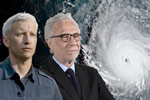Mars Rover Curiosity Makes Curious Find On “Martian” Surface
Publised Friday August 10, 2012
By Travis Moore
Related story: Truck in Rover image

PASADENA, Calif. – For the second time in four months what appears to be human created junk has marred an apparently successful NASA mission to Mars.
To great fanfare last Sunday night the Mars Rover Curiosity was gingerly lowered onto the surface of Mars. On Thursday Curiosity allegedly beamed home a special postcard – the first 360-degree color panorama of what supposedly is the Gale Crater where Curiosity was set down.
“there is a friggen old car in new rover shot at 10oclock.”
Scientists admired the sweeping vista – until about 3:00 p.m. EST Friday. Around that time, a Twitter message from Brookline, Massachusetts 13-year-old Samuel Bettendorf spread through the social networks like a bolt of lightening. The message: “there is a friggen old car in new rover shot at 10oclock.”
It did not take long for rover watchers – and academics – to check their computers. Indeed, the ballyhooed photo includes a flat, horizontal form in the distance near the base of Sharpe Ridge that appears out of place. Magnification confirms that the object is not of Martian origin. Rather, it is the burnt out remnants of a mid-1970s economy sedan.
 By 5:15 p.m. EST, NASA’s official image on its website no longer included the object.
By 5:15 p.m. EST, NASA’s official image on its website no longer included the object.
"Apparently, our computer hardware does not perform as well as our masterpiece Rover Curiosity of which we are so proud,” said mission scientist Dawn Sumner of the University of California, Davis. “We know it’s not unusual for photographs to get corrupted if a hard disc drive has seen a lot of wear," she said. According to Sumner, the image comes from an earlier photograph that was overwritten – although not completely – by the Mars photo. The leftover image of the car was purportedly transposed onto it.
“I have no comment about what appears to be a little data corruption,” wrote mission chief manager Mike Watts in an email. Watts is employed by the NASA Propulsion Laboratory, which manages the $2.5 billion mission.




